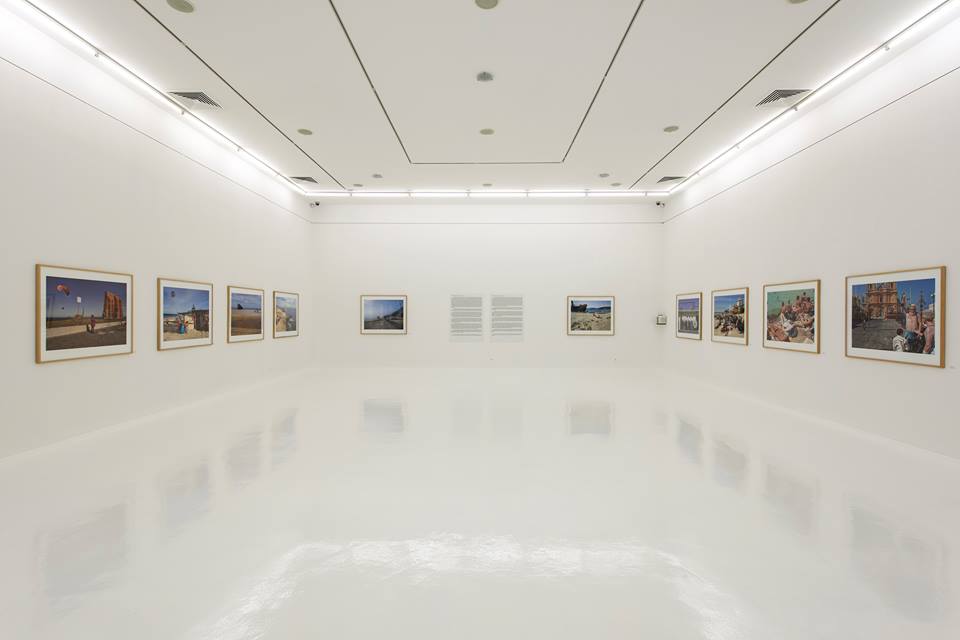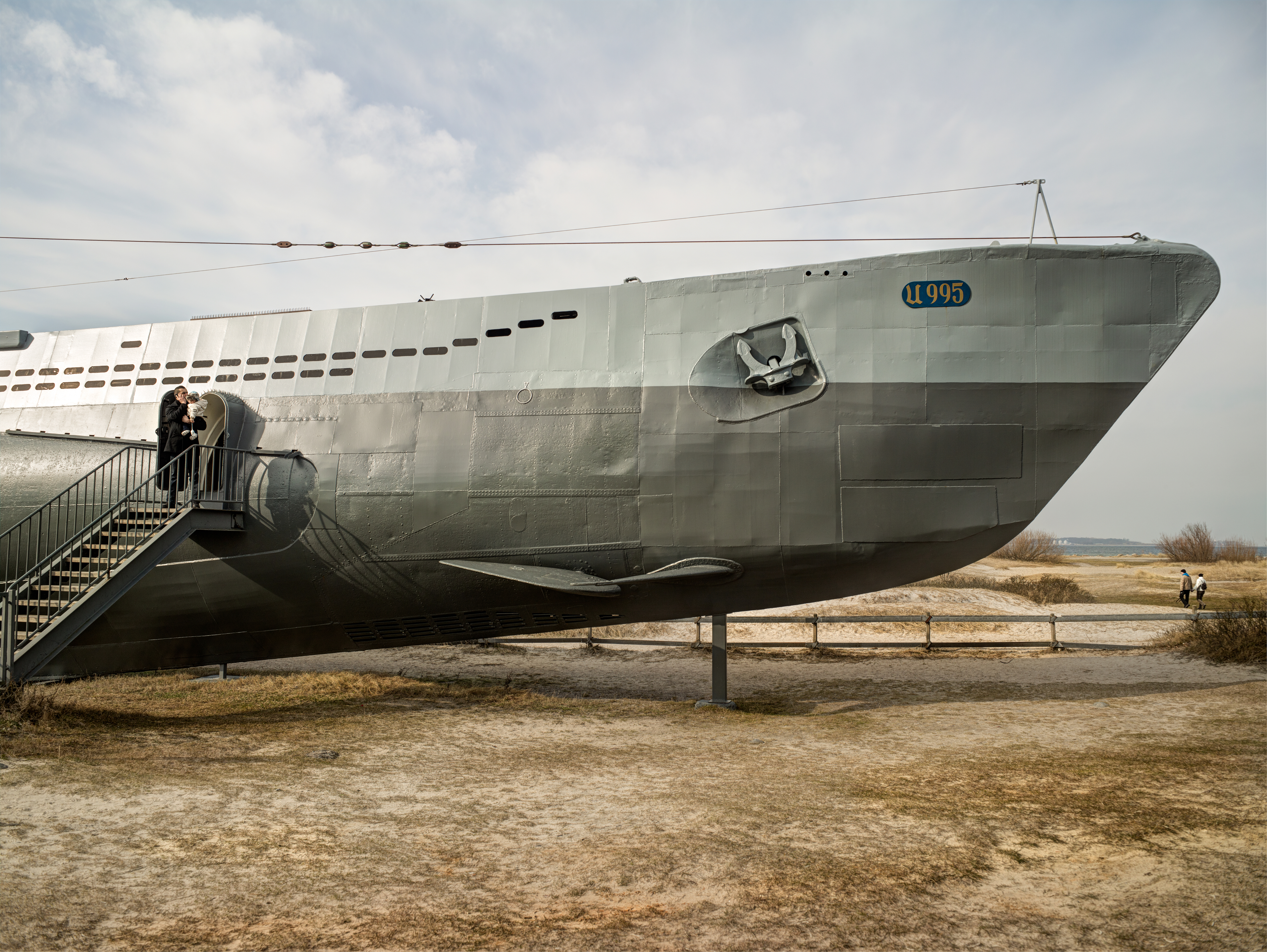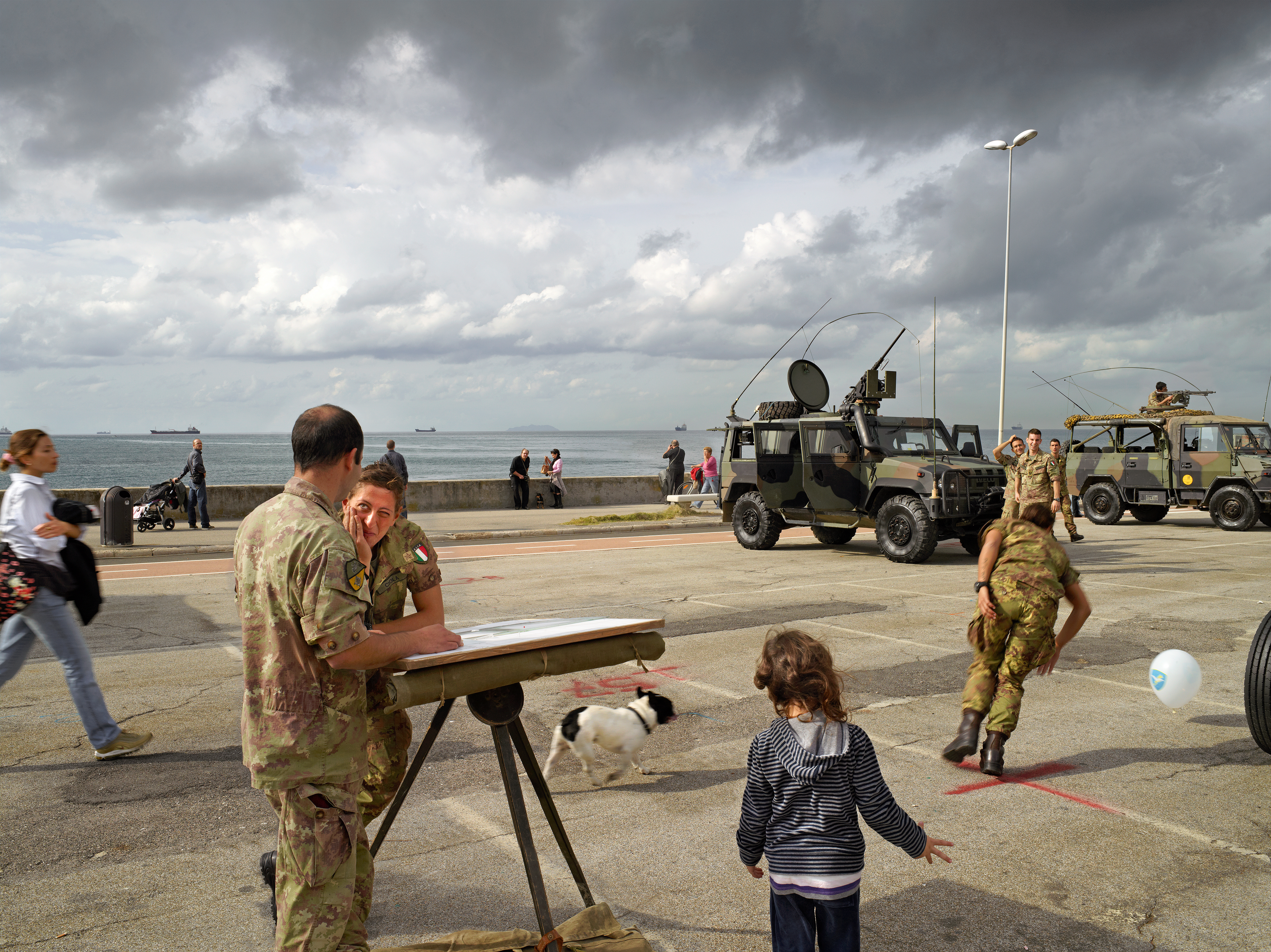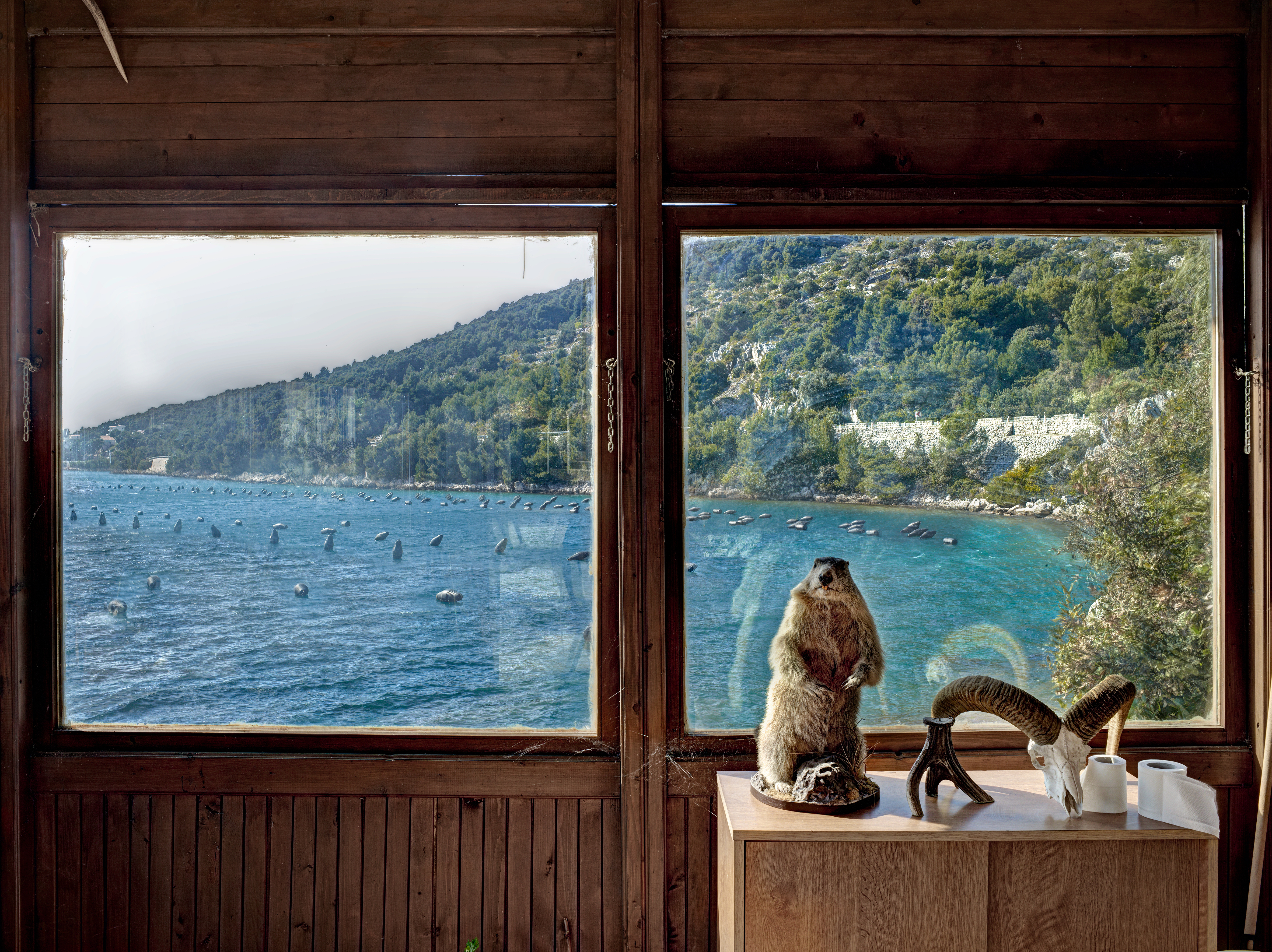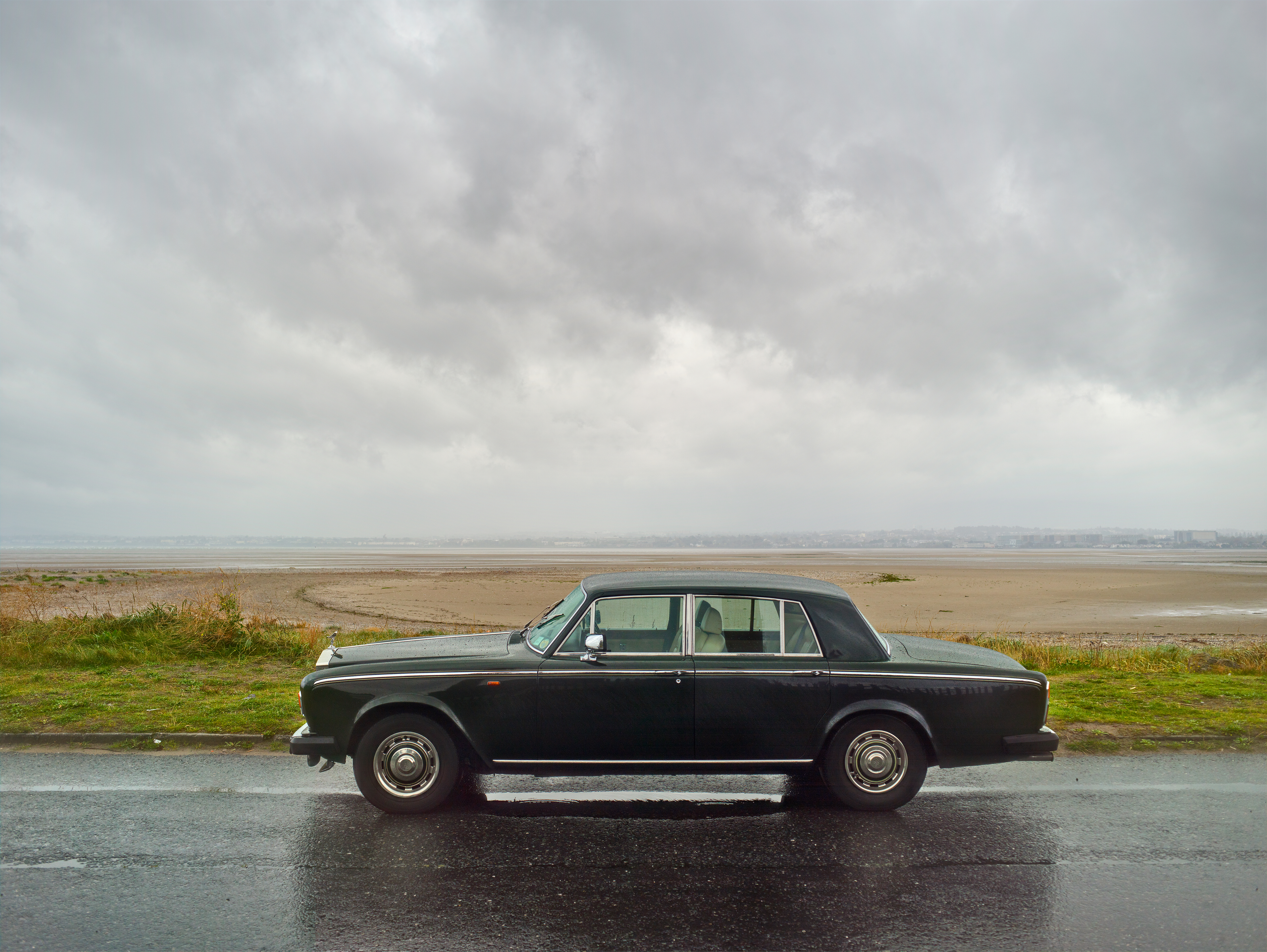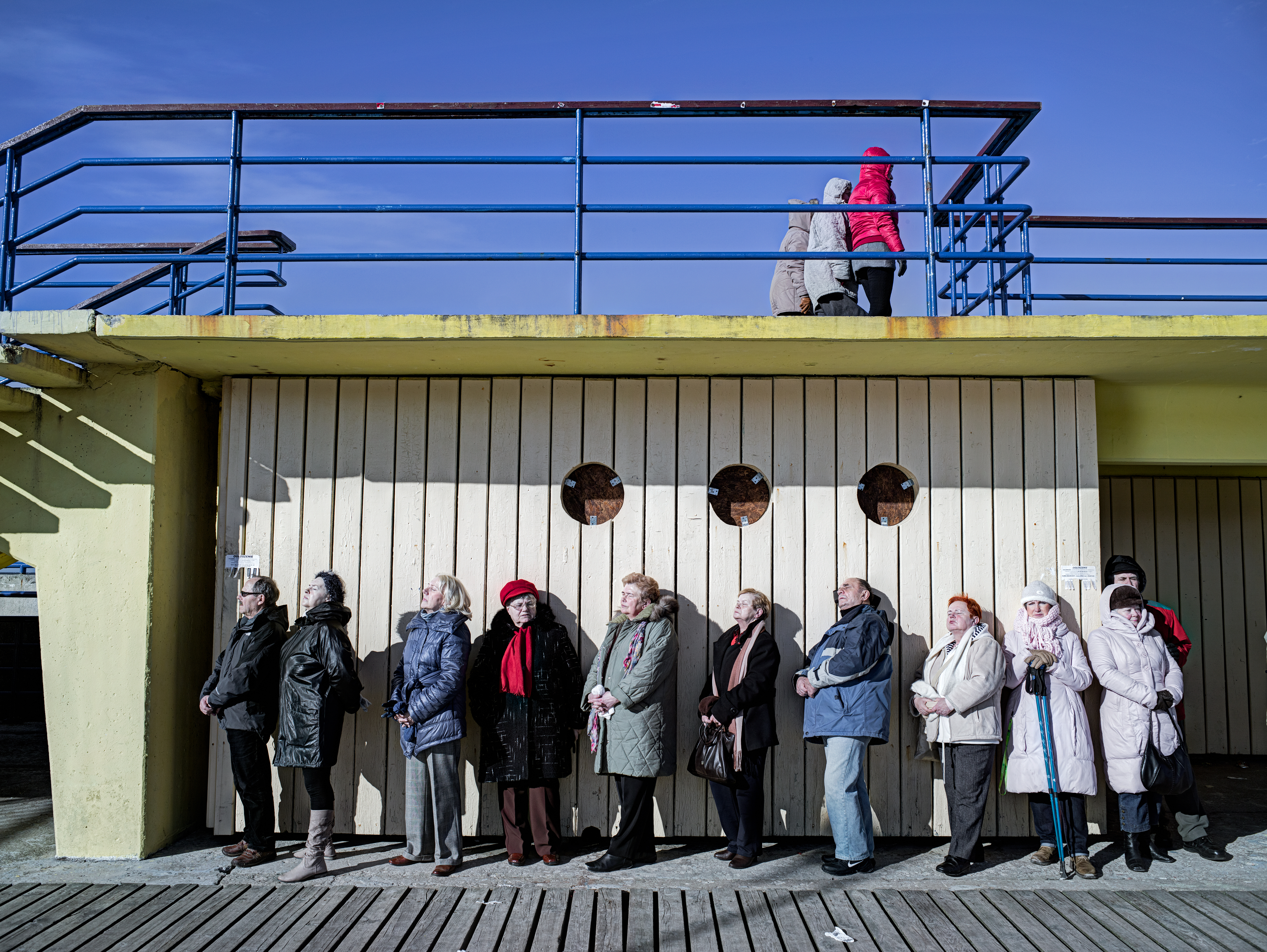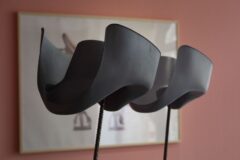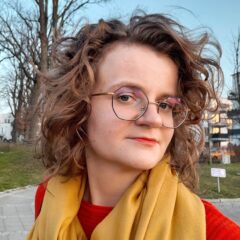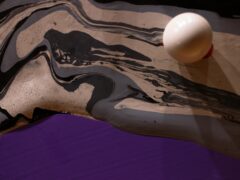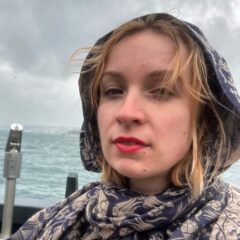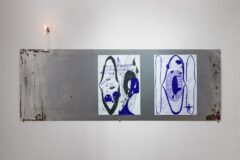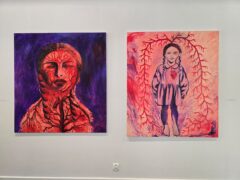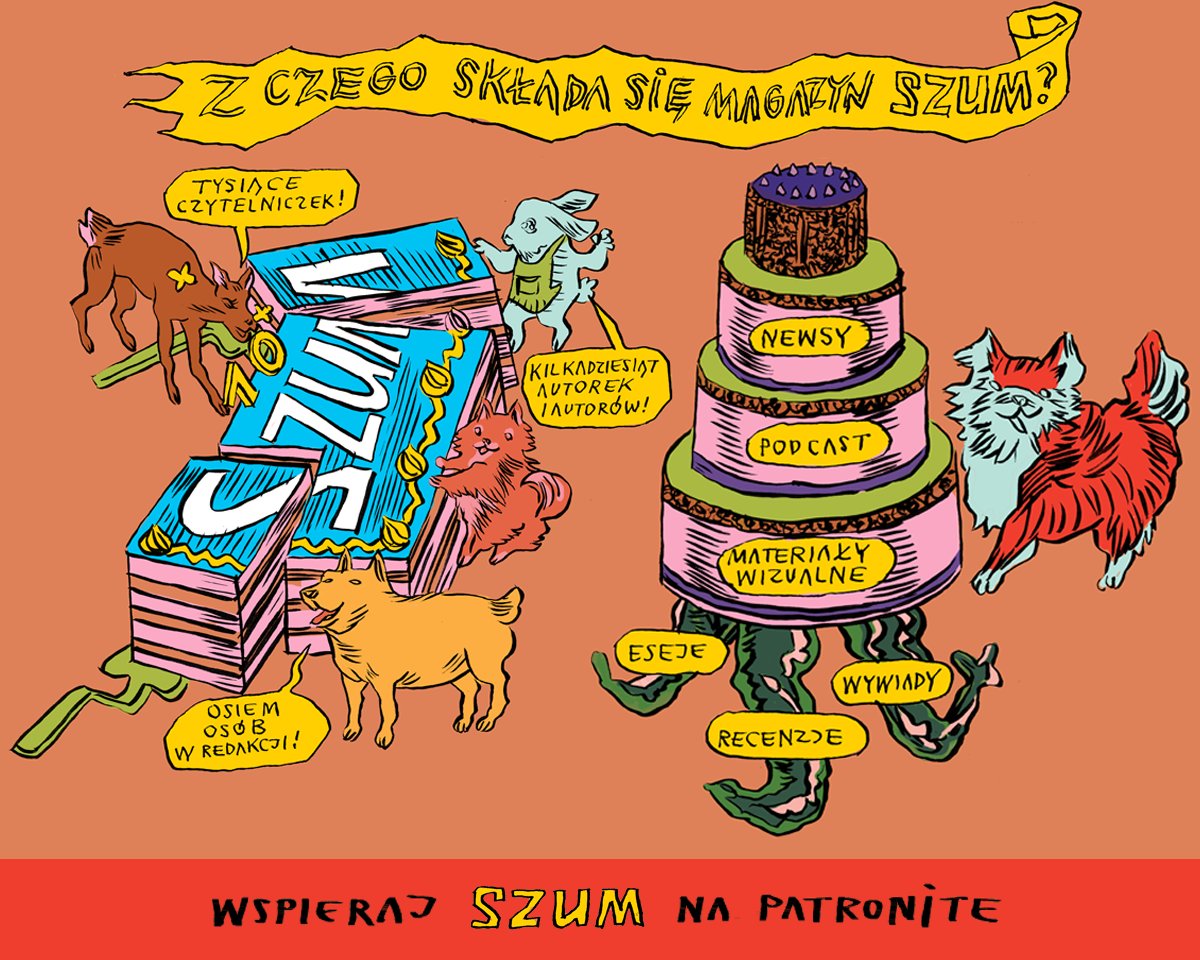Every Project is Different. Interview with Carl de Keyzer
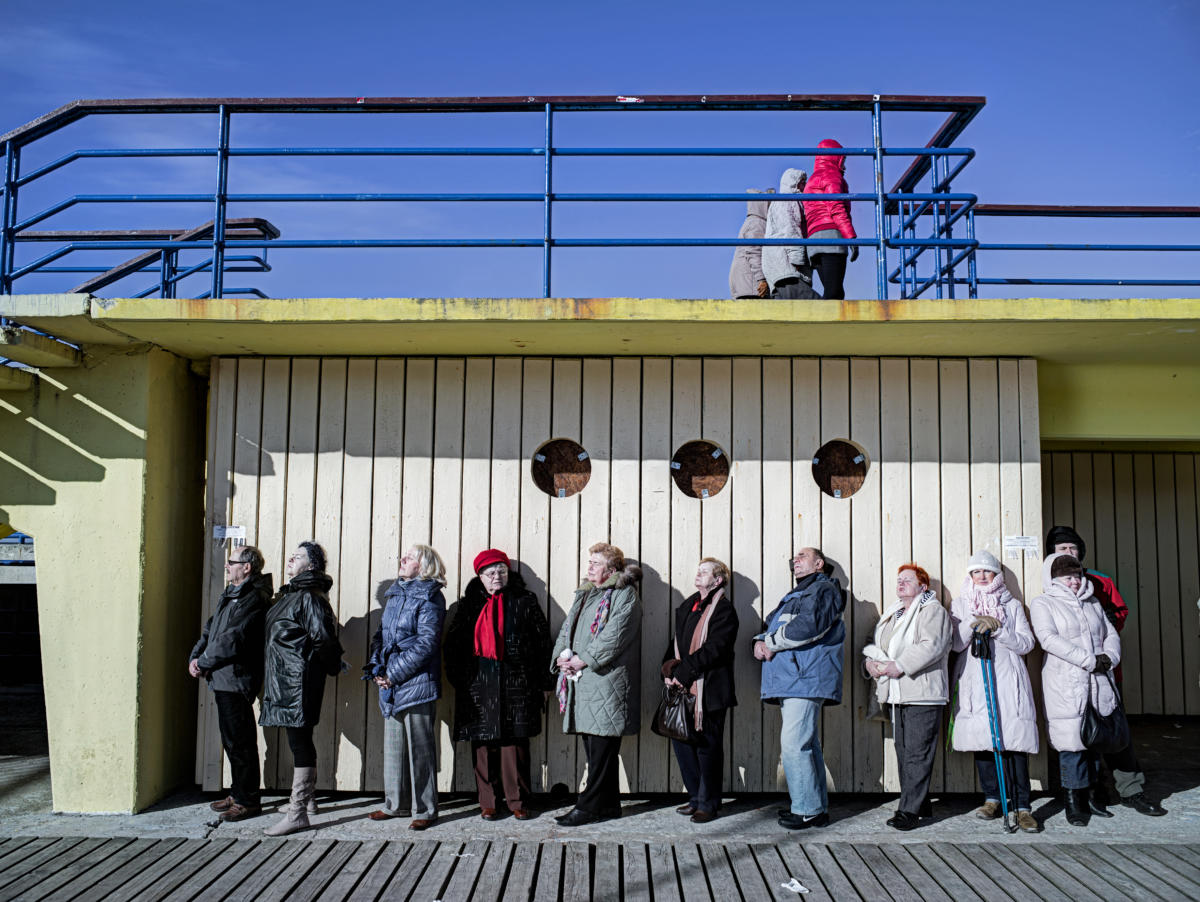
Adam Mazur: Let’s start with Moments Before the Flood. What is it all about?
Carl de Keyzer: It was my first big project on landscape photography. It was quite different and it was an important step forward for me. Actually, a lot of prints were sold. For the first time people told me: „Well, we have been looking at your work for about 25 years already and you always make pictures of wars, prisons, political issues, and finally you made something beautiful or something we can put in our living room”. Of course, that was not my intention. It was more or less the opposite. I always use aesthetics in a different way. I try not to make beautiful pictures to put on the wall or next to the chimney, but I like that people see it that way and at the same time I am able to get the attention of the public for the main subject, which is global warming, global threats. It is not that I am an ecologist or someone who wants to change the world, but for me that was a good subject. I thought I could say something about the issue in an original and a different way. For me it is always a pretext to travel, and this was the ideal situation. In the meantime, my view on things has changed a little. I look at my subjects in a different way, then and now. These pictures have a distance and are more topographic than my other works, which are quite often more documentary, photojournalistic. Moments Before the Flood has opened more possibilities for me, not just as an artist but as a documentary photographer too. Maybe I am at that age that I have to look at things from a distance, so the images are bigger and have more detail. This is possible thanks to the growing resolution of digital cameras. It is something I always liked: attention to detail, small things, multiple layers in one picture. It is more complicated and sophisticated than photography shot straight in the face. Moments Before the Flood was a very tiring, very exhausting project, but it opened a lot of opportunities for me.
It is surprising to hear that you do not want to change the world with your photography, and don’t really care about ideas close to the ecological movement. What about your past projects that were dealing with – as you said – politics, wars, religion. Wasn’t that a kind of engaged photography?
Well, Moments Before the Flood is also an engaged project, but I am not going to spend the rest of my life as an ecologist. Most of my projects are about power, powerlessness and big systems that have an impact on societies, on people. This time it is not communism, it is not religion, it is not the prison system – it is nature, which was a very good opportunity for me to do landscape. In general, there is no principle. Even though in Moments Before the Flood there are no people directly involved, it is about a change that has an effect on people’s lives. Mostly in regions that you can see in my works. It is about history too, because I talk a lot about the history of facing the enemies that came from the sea over the centuries, and it is not just about the sea as a threat or about global warming. It is also about the tradition of Europe fighting against everything that came from the sea, all the enemies, Vikings, Romans, Germans, whoever came, people looked – especially in Belgium – at the sea and they never knew what was coming. The only thing they knew was that something dangerous would come from the sea. Generally speaking, it is not wars or invasions or whatever plagues, it is the sea itself that is the possible threat. The European coastline is full of remnants of its fortresses, castles, walls. The only thing I didn’t tackle in Moments Before the Flood was the immigration issue. I tried to do this in Greece and Spain but I realised that it became a totally different subject so I left that aside. There is only few traces of the immigration problem. I wanted it to remain symbolic.
How would you describe your approach to landscape?
You know that a lot of my inspiration comes from the history of painting and I am a big fan of bad painting. I like strange genres of painting like history painting or war painting and now it is marine painting that I like most. In Holland and in the Flanders there is a long tradition of marine painting. There are not too many masterpieces in this particular genre. Marine paintings were mostly used as expensive wallpaper. The painter made a big painting of a storm at sea and then some rich people bought it to put it in their living room. In a sense it was a way for you to face danger too. It is like when you photograph or paint something that you are afraid of, then the possible danger becomes less frightening, you are getting used to it.
Your pictures are very formal and beautiful. At the same time there are certain situations you are looking for that are typically photographic, decisive, moments.
I photographed 5,000 beaches during 18 months of travel and initially I really had the intention not to photograph people at all. I just wanted to depict the power of sea, the beauty of a beach. I thought that that should be enough to evoke what I wanted to show, namely the danger and awkwardness of being on a beach that in half an hour will be hit by a tsunami. Of course, it is a fiction. I realised that adding one person, two persons to this situation makes it much better. It helps to show the feeling of being endangered that I wanted to express. After a few months of photographing only rocks, sand and sea I started to add people to my images. I am a photographer of people and I have this reflex, so it was not hard to do. But there was a technical problem, because these images you see printed here consist of several exposures put into one final image. At first everything is done with a tripod. I had to do this for the first time in my life, because I wanted to achieve a very high-resolution of image. Circa 80 million pixels per image. The dynamic range of cameras was not high enough to have maximum detail in the sky, the sea and in the shadows at the same time. I wanted my images to look like a real painting, which is always very sharp and beautifully balanced. I really wanted to reproduce the kitschnessand the technicality of the marine paintings. From a distance they would look like paintings and when you come closer you would see that they were photographs. To achieve that I really had to work with a tripod and I had to make four or five different exposures, then bracketing and finally everything was put together and photoshopped. It is quite easy to achieve when there are no people running around on the beach, because when there are, you take for example four pictures, it doesn’t work. People are moving all the time, and I am not into staging photography. So what I did was first photographed the background, the sea and then the sky and then the beach and so on and then I waited at the same place for something to happen. I was trying to anticipate people doing something interesting in front of my camera because I couldn’t move. It did not matter to me what was happening next, I had to stay still at my tripod hoping that I did not make the wrong decision.
Comparing your works to marine paintings or photographs by Gustav Le Grey, it is striking that you don’t really care about weather. There are no real storms or dramatic clouds in your pictures. In your work the sea is…
…calm. I never photographed when it was stormy weather. I thought that the pictures would be stronger when taken in really nice weather. When there is nothing going on danger becomes even more powerful. When you photograph only when there’s a storm it is a one to one situation. It doesn’t work. But the sea becomes more dangerous by putting five or four images of sea on the top of each other. If there are only few waves and the sea was almost flat by adding the next four pictures to it, it becomes a little more dangerous. The sea becomes the main actor of the picture because there is only one exposure for the shadows, only one for the highlights, but there are four on the top of each other for the sea. Not everybody sees that, but if you look closely you will see that it is a bit artificial and the main subject is the sea.
You are very convincing. Does it mean that from now on you will be a landscape photographer?
No, I have another project coming up which is quite similar to Moments Before the Flood, but no, I’m doing different things again. All the time I’m trying to change my photography. My projects are always functional, so when I find the subject I am trying to find the technique, or something that fits the subject or the concept or the idea. So the reason why I am continuing to do landscape photography is definitely not because I sell a lot of prints with landscapes. Definitely not.
However, it might have been a reasonable answer to the decline of photojournalism and agency photography: moving to an art gallery to show landscapes that are beautiful and sell much better than for instance images from Zona or Congo (Belge).
Right now I’m doing more topographic photography and I like the results. There is a big change in my approach, but it is not because of the art market, or because there is no more photojournalism. I have never really worked a lot for magazines, so for example I did not do Zona because it would sell well in magazines…
Tell me about the way you work. How do you start a project? For example, what kind of research did you do before shooting Zona?
In the case of Zona a lot of things happened by accident, but in some strange way they all fitted together into one big oeuvre. For me it always has to do with systems and abstract things that have an impact on societies. Zona was a complete coincidence and accident. There was a big Magnum show in Siberia supported by the George Soros Foundation, which was spending a lot of money in Eastern Europe. This show was about the Soviet Union from 1945 to 1990 and was exhibited in the former Soviet Republics that did not have money to rent a show like that. So the show went to Siberia and the idea was to send one Magnum photographer to each venue to do workshops for local photographers and so I ended up in Siberia, which was not my idea at all. I had no plans to do another book on Russia because I did one in 1989. I went there anyway and there was one student, a local photographer who said „Let’s go to a former Gulag tomorrow. It is now the prison but it is still the same space”. I couldn’t believe that Gulags are still open as prisons. So it started with a small workshop with ten photographers in Siberia lasting five days and then I saw the opportunity to make it much bigger. I asked the local photographer „Is there only one camp in Krasnoyarsk?” And he answered „Oh no! There are 135 different camps in Krasnoyarsk”.
Do you remember your first impression from Gulags?
Everything fitted and looked like we were in Disneyland. It was very kitschy. The history of the Soviet Union and the communist system came together, so I recognized a lot of elements from my earlier book. All the propaganda, tours guided by militaries. I like when people show themselves and when they have an opportunity to present themselves in an ideal way. You may call it propaganda or you may call it theatre. I don’t stage my pictures, but I love when people are doing unintentionally all these things for me. The trip to Zona was one big theatre and it was an amazing experience that we had visiting fifty different camps. I had two colonels who were following me all the time for eight months. Sometimes they even slept in my apartment. During this trip Sasha Kuznetsov, who was a local photographer, came with me and took pictures too. It was like an amazing travelling show. Of course, there is always a danger you can be used as a propaganda tool for the system. There is a thin line that you have to be aware of: you may be used or you may be using the system for your own purpose. It was a very happy accident, and I’m always waiting for that kind of thing to happen because it is very difficult to come up with situations like that by yourself.
Same was with Moments Before The Flood?
Yes, I had an assingment from the city of Bruges. There is a big concert hall and they told me: „Well, we have this programme next year and it is all dedicated to water. So we have water music by Haendel etc. We know that you are a photographer of people but why don’t you photograph water for us for few months.” It was 2006 and I ended up at the Belgium coast just to photograph water and that is how I started to look at the coastline in a different way. It was the same moment as the Al Gore movie and everybody was afraid of the sea level and that the North Pole will melt down in two months. I immediately saw new opportunities and then I made it bigger.
What you said about how people are actually representing themselves in front of your camera is interesting. You have mentioned that you are „a people’s photographer”, so how do you work with people? What is specific about your approach?
Well, I never ask people to do things for me because I’m a very shy person myself. I have a lot of difficulties in doing portraits. Sometimes people ask me to do a portrait for a magazine or a newspaper and I just can’t do it. I can’t look people in the eye and take a picture at the same time. What I can do is to recognize situations and approach people in a quiet way to take the pictures I need.
For example Zona is a series of photographs shot very directly. Almost in the face of prisoners.
Actually it was a very difficult moment for me, but I decided to continue. We had a commander of the camp with us. We had two colonels as well and we had a local photographer Sasha with us. Altogether four or five people. They called each camp in advance and there were another six people waiting to join us. When we moved inside the camp the commander was opening every single door, every cell, and there was always one, two, three, four people inside. When he opened the doors he told the prisoners: „You are going to be photographed”. They had nothing to say about it. If you did that in Belgium they would call their lawyer and say „Fuck off, you can’t do this!”. In Russia the situation is very different and the commander decides about everything. I didn’t see any corpses or torture or anything you might think about being present in the camp. All you can see is in the eyes of prisoners. What you could not show in your photographs was always present in their faces. Sometimes the local photographer who liked to stage things a lot told prisoners: „OK, you sit on this bed, you sit on that bed, you do this, you read the book, you put your glasses on” and I never interfered in this kind of situation. I was just watching while the theatre developed and he took the picture.
How was it in Congo?
In Congo there is another problem. Namely, if you don’t ask for a permission to photograph people they are going to lynch you. It was the toughest job I have ever done in my life. I was dragged to the police station and arrested fifty times. But there is always a goal inside my head. What I want to achieve in a certain project. I hope for certain images, situations to occur and actually when I wait long enough – I am not a big risk-taker, I just wait – all of this is suddenly happening. So even when they arrested me in Congo I knew that when I leave the police station something will be there.
There is always a controversy among photographers concerning paying for photography. What is your opinion?
Oh, I never paid in Siberia but for the first time in my career I had to pay in Congo. Otherwise it was absolutely impossible to work. It was always a small price. It was one or two dollars. Sometimes it was actually quite funny. For instance I wanted to enter a prison in Congo at the border with Rwanda. The prison was full of people who had committed genocide in Rwanda. They have put all these people in Congo prison camps, otherwise they would have been killed in Rwanda. So actually these people didn’t want to leave the prison. You always need permission to photograph and it always takes two or three days to get it. But finally I got the permission and I came to the prison. There were guards and two cars with mounted guns at the big entrance gate. I said „Here is my permission from the judge”. And they replied: „That is OK, but the problem is that prisoners haven’t eaten in two weeks and it is not a good idea to enter the prison right now. Even we don’t enter it by ourselves” and I said „OK, but can I try?” They said „If you want to first go to the market and buy a 50 kilo bag of rice. Then I will shout that there is a white guy with 50 kilos of rice. They will easily allow you to come in” and that was what happened. They let me in and allowed me to take photos.
Especially in Belgium, there is another controversy concerning the country’s colonial history. How do you cope with this gloomy past? It is a nice story about you and the rice in the Congolese prison, but still you are a well-off white male working with black people in a poverty stricken, post-colonial country…
Oh yeah, that was a very colonial act and I understand that. I see the humor of the colonialism, but to me the Congo book was a big criticism of Belgium not of the Congo. For me what happened in the Congo is incredible. Congo is 80 times the size of Belgium, which is a huge difference, and actually Belgium successfully exported to its colony its own surrealism. In total there are more buildings built in the Congo than in Belgium, and you can see this in the historical pictures that I used while working with colonial backgrounds. And when I finally made the whole trip I was very ironic and used a tourist guide from 1954, when Europeans, mostly from Belgium and France, visited the Congo as a touristic destination. Of course, I can understand that people can interpret what I did differently. They may think that there is a lack of respect. But you know, I’m not a photojournalist. I’m not telling the truth. I’m just using the subject for my own purposes. Sometimes I’m twisting reality quite strongly. I’ve done that in most of my projects. In a way I try to get closer to the truth by lying so much. I don’t believe in objective and politically correct photography. It is always a very subjective and personal interpretation of reality.
In this sense a work is representing you.
Oh yes, it is my view on something and it is not the absolute truth.
What would you choose if asked by an editor to select only one single image to represent you in, for example, a history of photography compendium?
I always take something from my last project. Every project is different. I’m a big fan of Martin Parr. But I have to admit that I wouldn’t be able to do the same thing for my whole life. It is a basic thing for many photographers and it makes it possible for you to recognize Martin Parr immediately. It is not always the case with my work. We tried to make a retrospective of my photographs a few years ago and it failed miserably. It turned out that you cannot mix older pictures with things from a new project. It doesn’t work. It is my approach to my subjects that are really temporary and very often it has to do with the reality of a moment. And also with the technology of a moment.
So how would you describe this process of constant development in your photography?
It is just to keep me going. Otherwise I would get bored of my own work. If I would have developed a very popular style thirty years ago and would have sold a lot of prints, and was then forced to reproduce myself all the time in order to keep going, then I would have stopped taking photos long ago.
Do you go back in time to see your old projects?
Oh yes, I do that very often.
And do you like to make new editions of old works?
Well yes, I try to copy my older works sometimes but with new technology that gives me new possibilities. Photography is such a beautiful art because everything changes all the time and we can never do the same thing twice. Even if I would like to stick to my first love India and would like to make a book about India every year like I did my first book, the book would be different each and every time. Because you change and because India changes, because everything changes… I think it is hard to be the same photographer for forty years. You become a different photographer every time you start something new. I’m not doing all this to make a career. I love to travel, to interact with people, to make all these challenges. Perhaps photography is for me a kind of therapy, I don’t know.
Or escape?
It’s an escape, it’s therapy. I was a terribly shy person when I was young. I couldn’t look anybody in the eye, and that shyness got solved a little bit by confronting young people, teaching them and explaining things to them. Of course travelling and confronting other people also helped me a lot. Actually, in my work most of the time I am confronting myself.
Yesterday you told me about an iPad edition of Zona with an extended number of images, and I thought that it is always interesting to see how photographers do new editions and how differently they edit their own material from the past.
Well, I have always been a technical guy, I’ve had a computer since 1982. I’ve always tried to explore new possibilites. I am always the first one to try out a new version of Photoshop, the newest cameras or lenses. Actually, with the iPad version of Zona my idea was to finally publish my own book. I didn’t need to publish it in print anymore. I didn’t need paper and a printing house. My idea was to republish all of my out-of-print books in digital format, because they are still there but no one can buy them anymore. So I have published it by myself so you can buy the book for four dollars. It was also possible to add a lot of things you cannot add to a printed version which always has to be limited to a certain size and number of images. When I got back home after spending ten months in Siberia and taking dozens of photographs, I had to choose no more than a hundred pictures to be printed in a beautiful book. Of course there were a lot of other things that happened to me during that year in Russia.
Is this included to the iPad version?
Yes, there are conversations and even music we made while in Siberia.
Was editing this newer version also an opportunity for you to critically review the first printed edition of Zona?
Well, the big problem with Zona that it was published by Trolley. I think they don’t exist anymore, because the publisher died two years ago. It was one of my books that was printed really, really badly. Something went terribly wrong in the printing process so all the images turned out way too blue and way too green. I was totally in shock and in a panic because I spent months in Siberia and that was not an easy subject for me to do, and the publisher blew it all by making a stupid mistake. I was really ashamed of that book. I didn’t want to look at it again after it was published. Strangely enough people liked that my pictures were way too blue and way too green. They thought that it was done on purpose, but – believe me – it wasn’t done on purpose. It was a big technical mistake. So the first thing I did in my own Zona publication for the iPad was to correct all the colors of course.
Did you do the publishing by yourself?
There was a company in Belgium making good applications. Four years ago it was still quite expensive to develop the whole thing. It cost around 16,000 euros. It was possible to break even after one year because the app sold the first day like 400 copies, and I thought that if it continues like this then in two weeks I will have my money back. Of course, after two days it stopped almost completely and I ended up selling only 2,000 copies more. It was nearly enough to pay for the whole production. I stopped selling Zona this week. I paid 150 euros a year to Apple for a developer’s license but I don’t even earn that much. So I stopped doing that. So my dream of becoming a publisher and republishing all my old books all by myself to have them available forever, was just wishful thinking.
Anyway, books are important to you and it looks like each and every project you have done is finished with a printed book. On the other hand, in interviews you have said that in many cases books also inspire you to make new projects.
Of course, I love books and I am a big collector. I buy books all the time and it is still the number one thing for a project. You could say that a website, an iPad app, an exhibition, a book are all different elements of one big project, but right now I pay more attention to exhibitions. Doing very big shows with a big budget like last year’s exhibition on World War I, I work with a whole team of people including designers and writers. Now, I kind of like the exhibition part of the whole thing more and more. Before, the book was product number one and exhibitions were just pictures on a wall. It has changed now.
How do you choose works for the exhibitions?
Well, each exhibition is different. The only thing I do is the first exhibition. I try to choose a proper venue. Of course, you cannot choose every museum, but before a project is finished I already know where it will be exhibited. I kind of target my project to this first venue and what happens after that is something I don’t really know. Sometimes the original show has 100 large prints, but the next exhibition consists of no more than 20 or 35 or 80. Sometimes I leave it to the curator of the place where it is exhibited. Sometimes I got pleasant surprises. Sometimes they screw it up completely. I never know but I am not manipulating people to do exactly the same show at each and every place.
Let’s move to more general issues like the condition of photography today. Yesterday we were talking about a strong competition among photographers and about the decline of photojournalism. How would you describe today’s situation for a photographer?
Well, it depends how do you look at it, in a commercial way or in an artistic way?
Both.
Commercially, I think, some aspects of photography have disappeared. Like you said, editorial photography is almost dead but what is not dead is photojournalism or documentary photography. There are even more photographers, young photojournalists, who tackle even wider subjects than before. Maybe we didn’t see it before or maybe there were not enough publishers or magazines interested in this kind of photography, but if you look at the internet it is full of subjects and documentaries. They are often very interesting, but nobody is paying for that anymore. Even I haven’t worked for the press for seven years already. I haven’t done a single assignment for Magnum for six years and I’m a regular Magnum photographer. Even the big magazines don’t pay. And if they pay then it’s 200 dollars a day at the best. Then you have to give 50% to an agency and pay taxes which in Belgium means another 50%. So at the end of the day you work for 50 dollars per diem. Why do that? I’m not doing that and I prefer to do my own thing and pay 50 dollars a day myself. I don’t have to work for some shitty magazine with a young editor who screws up your reportage anyway. In a way it is liberating. At least for me it is liberating, but I understand that for young people it must be frustrating not to make any money. Now they have to make money in different ways. They make 50 dollars there, 50 Euros here. It is not like one big assigment every year in the good old Magnum days, twenty or thirty years ago. You had two assignments every year: one for National Geographic and one for New York Times Magazine, and your year was good. You could do your own stuff the rest of the year. This is finished. At Magnum the shift is towards contemporary art of course. It is a huge market and very different from those millions of people who used to buy National Geographic or New York Times. Audience is more diversed now. You have to put your images online, on Facebook, on Instagram, on Pinterest, whatever. But it is not the big splash anymore. You don’t make big bucks working for advertising companies anymore. That’s all finished too. I did a lot of big campaigns for Diesel, for Coca-Cola, for Smart. One job like this in a year was enough to pay for all my trips. This is also over. I don’t know what happened. It’s like at one point people decided that photography was no longer necessary, or maybe shareholders decided that what they paid photographers was way too much in the whole budget. I don’t know what happened, but it happened very quickly.
What happened next, for you and your colleagues in Magnum?
All agencies have very hard time right now. It is a revolution and people pay 10 dollars for a picture now or even nothing. A lot of young photographers are very happy to have their work published for free and at the same time they are very talented.
What about the books? Are they also in decline?
No, quite the opposite. When I did a show in the 1980s and 1990s, and in those years I did around fifteen big shows in Europe and in the United States, there was an average audience of 2000-3000 people attending the exhibition, which was a lot in those days. Now, when I do a show in a museum there is like 40, 50, sometimes even 60,000 visitors, which is incredible. Same with books. When I made a book twenty years ago it sold slowly and scarcely ever more than a thousand copies. Now my Congo book has circulation of 20,000 copies. You lose something and you gain something in another field. Recently, as I told you, I sold more than one hundred large prints which is great. It happens if you keep going, if you keep believing in yourself and just being yourself and don’t question yourself. I teach, so I’m in contact with a lot of young photographers which is good for me, but it is also good for them. I have my experience that I can give them. They give their energy to me. There are two new young photographers from Belgium joining Magnum, Bieke Depoorter and Max Pinckers. It is very inspiring.
Usually interviews are done with the very last question being about 'what’s next?’, but yesterday you said that you do not want to talk about your current project because the competition is so strong that it is better not to publish things in process.
In the 1980s and the 1990s or even way before the old traditional Magnum style, you could tackle any subject. You could go to India for a year, you could go to the Soviet Union for a year, and you came back with pictures that nobody else could reproduce, because you were such a good photographer and nobody else had spent so much time looking at people, working in the darkroom, making the perfect composition, looking for the perfect decisive moment. You knew that there were not so many people who could really do that. Actually, most of those who really could do it were already in Magnum in the 80s. There were maybe few others outside of the agency. Basically there was no competition. And if somebody wanted to become a competitor, he had to practice way too hard to make the same perfect images. Of course new computers and Photoshop changed all that. First of all, nobody believes anymore that all these pictures were made in a fraction of a second. It is so easy to reproduce the decisive moment using a computer. Another thing is that photography is moving more and more towards contemporary art. This is good, but the problem is that when you look at pictures like Stephen Shore’s or the good old Bechers, it is quite easy to reproduce them. It’s good to be Thomas Ruff and make JPGs, but you have to be the first one to do it, otherwise you’re screwed.
Przypisy
Stopka
- Osoby artystyczne
- Carl De Keyzer
- Wystawa
- Moments Before the Flood
- Miejsce
- Atlas Sztuki
- Czas trwania
- 29.05-13.09.2015
- Osoba kuratorska
- Jacek Michalak
- Strona internetowa
- atlassztuki.pl
- Indeks
- Adam Mazur Atlas Sztuki Carl de Kayzer

